Sites of Exchange and Collaboration in Art Practice and Education
On May 19, 2021, Imagining America (IA) hosted a Teaching and Learning Circle webinar with artist and University of California, Davis faculty member, Robin Hill, as well as special guest Cathy Koehler, Director of the McLaughlin Natural Reserve, with whom Hill has a long-standing partnership. The full video recording of the event can be found here.
IA Membership Director, Trina Van Schyndel, opened the webinar by welcoming the intimate group gathered and by offering a land acknowledgement for UC Davis, from which IA staff were joining that day. Attendees were invited to use the chat to introduce themselves and acknowledge the land from which they were joining that day. Van Schyndel continued by introducing the session presenters and by offering her own eagerness to hear about Hill’s artistic and pedagogical practice connected to particular spaces and places within California, including her partnership with the McLaughlin Natural Reserve.
Hill welcomed attendees and set the stage for the webinar by asking attendees to reflect on the way online interactions with others have felt more interactive, fluid, and democratic this year, in that more people can show up in the same “rectangular space” online. She is curious about how interactions online are now migrating into real life and how experiences during Covid have changed us, our teaching, our studio practice, and our connection to new ideas, people, places, and research methods. She asked attendees to consider, “What would you pull forward from your experiences of the past year, now that we are returning to in real life interaction, to foster a more equitable, experiential, and less hierarchical space for your and our future interactions?”
As she virtually welcomed attendees into her studio space, Hill described the intended overall flow of the webinar, focusing first on her solo practice, then her collaborative practice, next her place-based work with students, and finally speaking to her work with the UC Natural Reserve System. She also offered a quote for reflection on how artists think – jumping in with two feet as a starting point and wondering what is possible.
“‘Conception’ cannot precede ‘execution.’ There is nothing but a vague fever before the act of artistic expression, and only the work itself, completed and understood, is proof that there was something rather than nothing to be said. It is not enough for a painter like Cezanne, an artist, or a philosopher, to create and express an idea; they must also awaken the experiences which will make their ideas take root in the consciousness of others. A successful work has the power to teach its own lesson.”
―Maurice Merleau-Ponty, “Cezanne’s Doubt” (1945)
Hill then reflected on how chance and serendipity also influence her work, including finding and having an encounter with something that already exists in the world and how this ties into the idea of collaboration, not only with people, but also with things. She then offered another quote for reflection,
“Perhaps, then, what a lucky find reveals first is neither cosmos nor chaos but the mind of the finder. It might even be better to drop “cosmos” and “chaos,” and simply say that a chance event is a little bit of the world as it is – a world always larger and more complicated than our cosmologies – and that smart luck is a kind of responsive intelligence invoked by whatever happens.”
― Lewis Hyde, “Two Accidents: Reflections on Chance and Creativity,” from The Kenyon Review (1996)
As the conversation turned toward Hill’s artistic practice, she laid the groundwork for understanding the sensibility that underlies her collaborative work. Her work is focused on transforming everyday materials into something more elegant and organized. She starts her projects with something that evokes inspiration or a sense of wonder. From there, she is intrigued with “art making itself” and the role of the artist in transforming something into art. It can be a big leap sometimes to determine how something is considered “her work,” and the idea of authorship is often on her mind. One example is her ongoing and evolving project “There’s only one sky,” which Hill described in more detail.
Turning back to collaboration and its importance to her creative practice, Hill shared another quote,
“You meet someone new and you create language together. There is a commerce of feeling and information back and forth, exquisitely coordinated. When conversation works, it is not a matter of meeting halfway. It is a matter of developing something new to both of us. We need to remind ourselves of what is obviously true but not often enough said: that different personality styles have different creative styles. There is no one idea of creativity that can describe it all. Therefore, in collaboration with others, we round up, as in any relationship, an enlarged self, a more versatile creativity.”
― Stephen Nachmanovitch, Free Play: The Power of Improvisation in Life and the Arts (1990)
She then described several collaborative projects and the different ways that collaboration took shape as she worked with other artists, scholars (scientists and mathematicians), and community members. Pausing to reflect on how in many of her collaborations there were moments of surprise, excitement, and things unplanned, and she asked attendees to respond in the chat to, “In the past year, what have you organized or enacted, that turned out different than you planned?”
Moving the conversation forward, Hill began to speak to inspiration for how she enacts collaboration with her students. The Lure of the Local by Lucy R. Lippard, an art historian and critic, describes the differences between space and place, specifically that place is all the things that happen – people, animals, insects, weather, history, etc. Even if your work is not about those things, it should be informed by those things. Otherwise you are just “plunking art down.” To make meaningful public work, you must also do research. Hill points to Pablo Helguera’s Education for Socially Engaged Art and Rosamund Stone Zander and Benjamin Zander’s The Art of Possibility: Transforming Professional and Person Life, among other books, as inspiration for her work with students. Often she finds that the work students are interested in is political and seeks to build on the history of activism and civil discourse at UC Davis and regionally. In addition to supporting student public art projects, Hill spoke about how she brings students out to areas like the Capay Vally to harvest their own, non-toxic art materials, like clay, and work with people like master earth builders, to then use the harvested raw materials to create sculptures.
In concluding the time together, Hill invited Cathy Koehler, Director of the McLaughlin Natural Reserve, to join in the conversation regarding their partnership. While Hill has not used the reserve as much for her own artwork in the past, she has collaborated with the reserve for student projects and is looking forward to installing phrases from her “There’s only one sky” project as signage in stewarded areas identified by reserve staff. She then offered this quote,
“To understand something is to understand its typography, to know how to chart it, and to know how to get lost.”
― Susan Sontag on Walter Benjamin, Under the Sign of Saturn (1980)
Hill views the reserve as a place where the imagination comes alive, as when you go to new places, especially in the wilderness, everything is new.
Koehler then took over to describe how the reserves not only hold a place in the research of faculty from the sciences, but also a place in the creative activities of those coming from arts and humanities disciplines. Her own background is in both art and science, and she is very interested in getting artists involved and experiencing the reserves. When students come out, often the focus is on the philosophical corners of “the land,” and the constantly changing landscape – birds, plants, insects, etc. Some have experiences with these types of places, but others don’t. Koehler gives them a “cash course” on the land, but ultimately it becomes a question of how do experiences in places like the McLaughlin Reserve relate to students’ lived experiences and their creative work and knowledge making. She expounded upon the idea of “the marks we leave on the land” in describing how one MFA student created an “environmental intervention” within the reserves called An Intervention in Space and Time focused on ecosystem restoration and repair, which requires an exercise in patience.
In wrapping up the webinar, Hill offered one last quote for reflection,
“Whatever you are looking for if looking for you too.”
― Saul Williams
Attendees then offered up reflections on their own experiences and what they took away from the webinar, including: the parallels between the four walls of the classroom vs. the landscape and the interior creative mind vs. public creative actions; how public engagement through the arts and humanities can be used to engage non-scientific people around environmental issues; and how the photos of students creating site-specific art are very similar to photos of a wilderness area, as if this way of working creates an educational “wild” or “field,” similar to the role of the reserve.
Enjoy the full conversation here.
This webinar was hosted from the Imagining America Teaching and Learning Circle (TLC) webinar platform. The IA TLC is an online learning community that builds peer support and conversations about the opportunities, joys, and challenges of producing public and activist scholarship, and designing and delivering community-engaged courses and projects.
If you are interested in co-facilitating a future TLC webinar or have a topic you would like us to explore, please email us at connect@imaginingamerica.org.


